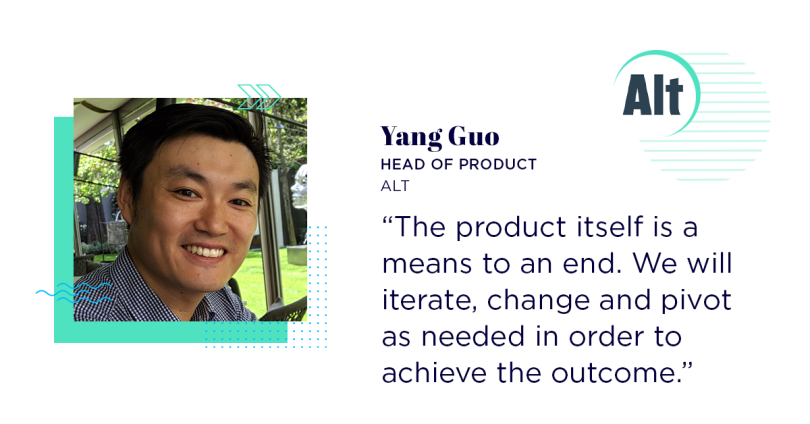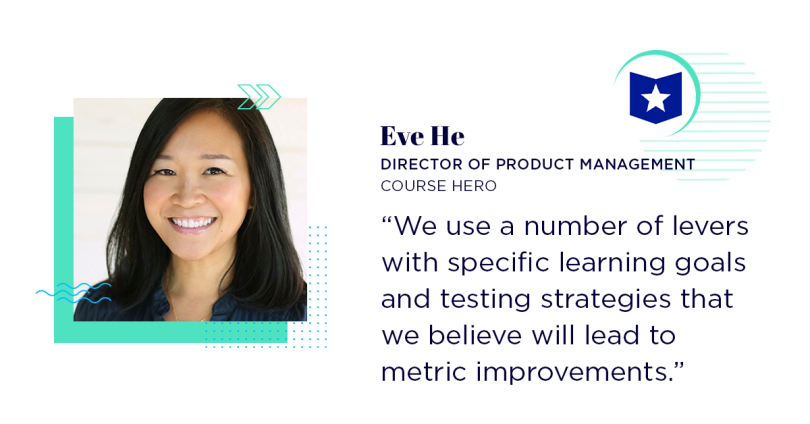So what came first – the chicken or the egg?
While this paradox may never have a finite answer, these local tech leaders can at least all agree on the answer to a not-so-age-old question: product outcomes or the outputs? The resounding answer: outcomes.
Though it may come as a shock that a product expert would not be as fixated on outputs or a list of features with set release dates, it is the outcomes that have a greater impact on the customer experience – which can either evolve into repeated business, or not.
“They’re both important, but outcomes guide outputs,” Carla Pellicano, head of product at Faire, said. “And outputs in isolation might fall short.”
Like Pellicano, other professionals within San Francisco have recognized the cruciality of positive experiences and satisfying a specific need for their users. So much so that Eve He, director of product management at Course Hero, has a team entirely dedicated to producing specific outcomes.
“Product teams are often told to deliver on outputs, and they end up working backward,” He said. “My team is set up to focus driving direct repeat traffic to our site by improving user retention and by expanding product offerings.”
Built In San Francisco sat down with Pellicano, He and two additional product experts to learn more about how an outcome-focused philosophy helps their teams produce better products.

“Ultimately, you need to build what users want, not what you want to build. Focusing on outcomes rather than binary milestones such as ‘we released X’ has kept our product team from building features that fall flat. Our suite of workflow products and rapid release cycles offering incremental feature enhancement exemplify this approach – we look for core improvements in key metrics with each release.”
Dr. Peter Alperin is VP of product, profiles, hospitals and search at healthtech company Doximity.

“We believe that to deliver great products for our customers, we should always work backward from the ideal customer experience, or outcome. They’re both important, but outcomes guide outputs. And outputs in isolation might fall short.
Consider the Faire shopping experience. We know that for our retailers to be successful, they need to be able to evaluate and make confident purchase decisions on goods that sell well in their stores. Our outcome is ‘increased, confident and successful purchases.’ Many initiatives can help deliver on this outcome – for example, badges that indicate how well a product sells or product reviews from other retailers. Both solutions require an information architecture (IA) that supports the display and comprehension of added functionality like badges and reviews, alongside core product information.
If we had teams focused exclusively on outputs, we might not prioritize the IA work, and instead end up with a less impactful user experience. By working backward from our target outcome, we’re more likely to prioritize the collection of outputs that create an effective product experience and deliver impact for our customers.”
Carla Pellicano is head of product at e-commerce company Faire.

“At an early stage, a company product is the business of making bets to find the core product. The fundamental bet we are making is that the product we are building (the output) is delivering real value to a customer (the outcome). As a team, we are much more opinionated on trying to achieve that outcome than the output itself.
Firstly, we are not wed to any individual product idea. The product itself is a means to an end, and we will iterate, change and pivot as needed in order to achieve the outcome. Our main metric is the measure of how our customers are deriving value from the product, and we iterate based on that.
Secondly, while we are focused on outcome, it is very random, and output is something we can directly control. We are very focused on shipping and iterating fast, as we want the time from ideation to measurement on outcome to be as short as possible. This allows us to spend less time on debating what features we should do, and allow us higher throughput to test more things to try to make an impact on our outcome.”
Yang Guo is head of product at fintech company Alt.

“Most tech companies nowadays set product team goals using the OKRs (Objectives and Key Results) structure. By setting goals with specific outcomes (metrics and results), they believe that the product teams will deliver measurable impacts. In practice, product teams are often told to deliver on outputs (certain features or specific initiatives), and they end up working backward to ‘make up’ the OKRs based on the actions dictated to them.
My team is set up to focus on specific outcomes: driving direct repeat traffic to our site by improving user retention and by expanding product offerings. The roadmap reflects an outcome-driven approach. It is not a list of features with release dates; rather, we use a number of levers with specific learning goals and testing strategies that we believe will lead to metric improvements. In order to improve user retention, we prioritize the internal search experience as it highly correlates with user success. Our roadmap prioritizes different problem statements and hypotheses that map to specific feature tests. These feature tests will help us learn how to create a fast and reliable unstuck experience for our users, which satisfies users’ core needs.”
Eve He is director of product management at edtech company Course Hero.





